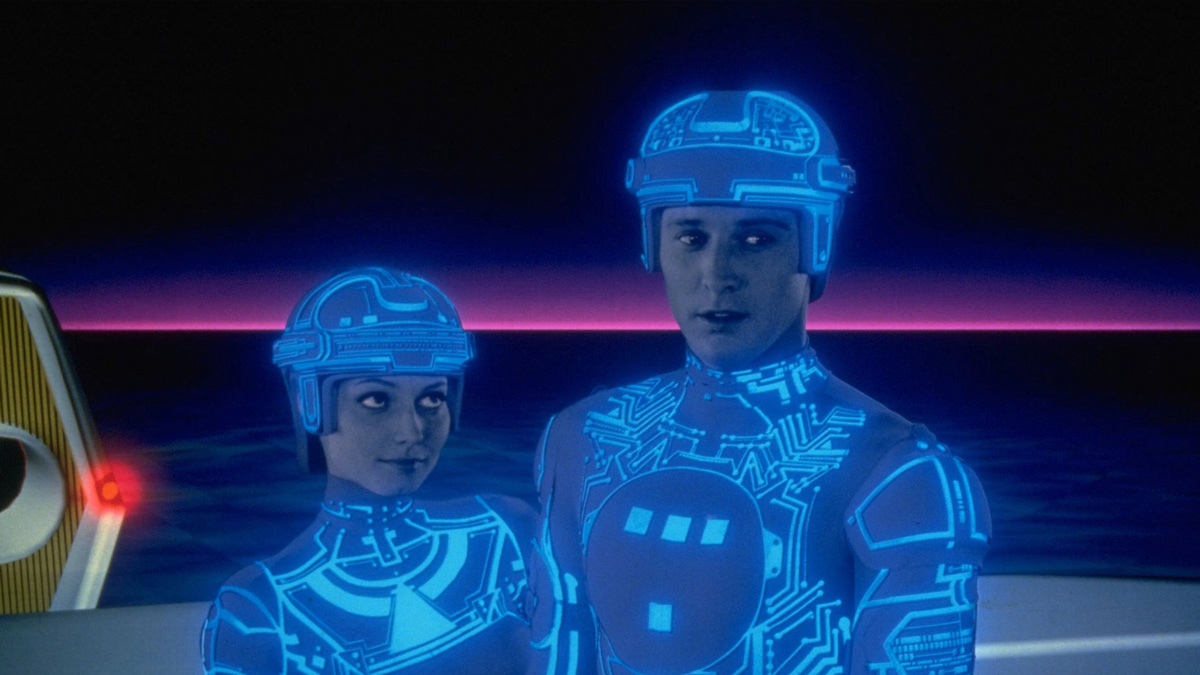
(c) Photofest / Getty Images
“Tron” The first full-scale CG movie in history, the long road to birth (Part 1)
2020.05.15
Proposal to George Lucas
Furthermore, in 1978, the company began developing a digital optical printer to replace conventional optical printers. It was completed in 1981 and is compatible with film formats such as 35mm 4P (perforation) standard, anamorphic, and 35mm 8P Vista Vision.
Triple Eye staff will receive technical advice from George Lucas' ILM as they begin this development. At that time, Whitney Jr. strongly appealed to Lucas to let him participate in the sequel to `` Star Wars '' (1977). In order to prove their skills, he promises to show them a CG (he called it ``digital scene simulation'') depiction of an X-wing fighter jet that looks just like the real thing. He then borrowed an X-Wing miniature and drew it as 3DCG with 75,000 polygons. Lucas is shocked by the reality of the offer, but upon hearing the budget estimate, he has no choice but to decline. (*7)
“Star Wars: A New Hope” preview
As you can see, Triple Eye's technology has made great progress, but it has been difficult to find a situation where it can demonstrate its capabilities. During this period, Whitney Jr. was enthusiastically promoting his business by distributing demo reels of the videos he had made to various locations (this information reached the ears of the author, who was a student at the time, almost in real time). (I remember carrying my Betamax VCR on my back and going to get copies made.)
It was also during this time that Lisberger and his friends met Whitney Jr. They promised to keep in touch and were waiting for an opportunity to work together.
Triple eye demo video
Edited as a sales demo reel. Following the live-action footage of Machine Room at the beginning, are test footage of the theatrical versions of ``Cosmos'' and `` Close Encounters of the Third Kind .'' After that, I did some rendering and testing of the CG software I was developing, and I created logos for the three major networks (NBC, ABC, CBS) and Mercedes-Benz. The last one is Peter Fonda in `` Future World ''.
*7 Lucas declined this proposal, but realized the potential of CG and digital technology, and instead of Triple Eye, he headhunted the leadership of the New York Institute of Technology's CG Laboratory (NYIT/CGL). This laboratory was led by Edwin Catmull, a graduate of the University of Utah, and Alvy Ray Smith, who had worked on paint systems at PARC, to develop 3D and 2D CG for animation. Lucas established a computer development department within Lucasfilm and began research on three themes: sound, editing, and synthesis. However, due to alimony from his own divorce, it became necessary to sell this division. The compositing department within that organization became the prototype for today's Pixar Animation Studios.
Movies “Looker” and “Adam Powers”
Whitney Jr. consulted Crichton, who had the greatest understanding of him, about the possibilities of the CG business. Crichton then asked, "When will we have digital humans that are indistinguishable from the real thing?" Whitney Jr. replied, "Probably in 10 to 20 years." (*8)
Crichton immediately compiled this idea into a script and decided to direct it as the sci-fi suspense film Looker (1981). The story is, ``A company called Digital matrix secretly replaces the models in TV commercials with CG, and controls viewers with hypnotic rays emitted from the eyes of the CG models.'' However, the setting was too unreasonable and the production was so poor that it was never released in Japan.
“Looker” preview
However, the ideas that appear everywhere are wonderful, and there are many gimmicks that have been realized today, such as 3D scanners that convert the whole human body into data, virtual sets that synthesize CG and stages in real time, and analysis of advertising effectiveness using eye tracking. It will be done.
Triple Eye expresses the process of actress Susan Dee's transformation into digital data as a change from wireframe to shaded image.
Also in 1981, Triple Eye presented a demo video called ``Adam Powers'' (or ``The Juggler'') at ACM SIGGRAPH , a large-scale CG conference held every year. This work depicts a CG character wearing a top hat and tuxedo based on the motion data of a street performer performing acrobatics. The production was directed by Richard Taylor, who left Robert Able & Associates (RA&A) and moved to Triple A after leaving the movie Star Trek: The Motion Picture (1979).
Triple eye demo video
Includes footage from ``Adam Powers'' and ``Looker.'' The YouTube commentary says 1982, but it was actually released in 1981. This seems to be a misunderstanding, as the video "SIGGRAPH Video Review" was sold at the conference venue the following year.
*8 Around this time, Whitney Jr. spoke in a magazine interview about the possibility of using CG characters to stand in for actors in long shots, or to play deceased actors, as well as Alien, animals, large crowds, etc. In a conversation with Crichton, he also talked about bringing dinosaurs back to life using CG. So at this point, they were pretty accurately predicting the potential of CG in depicting digital humans and creatures.

